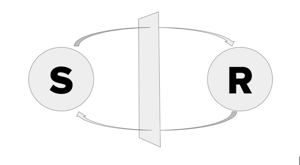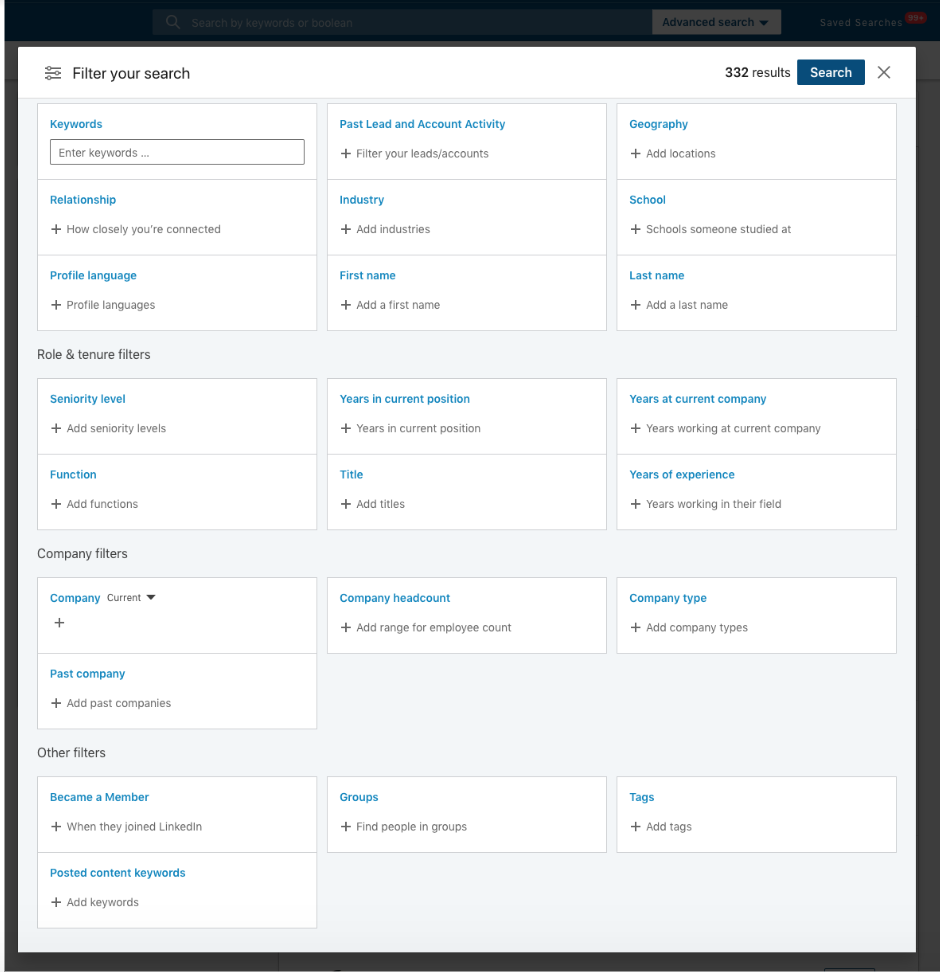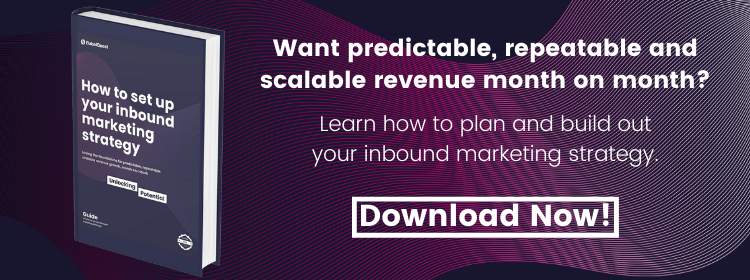Poorly designed personas (or personas that disappear into your drive like your photos and never see the light of day again) are the single biggest cause we find when a company’s inbound marketing isn’t working.
Many businesses go to great lengths defining and documenting their personas, only to put them in a drawer and forget about them.
In the same breath, you’ll admit your inbound marketing isn’t working as it should. You may also be thinking that something isn’t quite right with your sales approach or with your general grip on what’s going on out there in the market.
We have news for you: all these things could be related.
The problem with not having (or using) your buyer personas
Without personas, you have no way of knowing how to speak to your target buyers. This extends from the subjects you’re covering to the kind of language you use. (How can you align your tone of voice guidelines with your buyers if you don't know how they prefer to communicate?)
So you start delivering content that isn’t interesting to your target buyers or doesn’t resonate with them and the quality begins to dip. Engagement falls, so you ramp up distribution, but your social posts begin to repeat themselves. Everyone loses heart and the activity levels drop off. You blame yourself, your marketing team, or even HubSpot, but you don’t get to the answers you need.
You (and everyone else) start asking ‘why doesn’t inbound marketing work?’. If you’re lucky, you’ll find an article like this, which can explain what’s going on and show you how to fix it.
Turning your inbound marketing around
I have bad news for you and I have good news for you.
The bad news is that you’re probably going to need to define your personas again.
The good news is that this time they’ll work, and so will everything else*.
In a moment, you’re going to discover:
- why your buyer personas didn’t work last time
- why they're a key element of your inbound marketing
- how you’re going to nail them this time and improve your inbound marketing and sales (you may even have a lightbulb moment)
First off, let’s get rid of the jargon. Personas? Avatars? Fictional representations of your ideal customer? Try this:
Simply ‘know your customer’
You do this already in the way you naturally interact with everyone around you. You read their signals — their body language, phrases they use, what they wear, the place they work, the position they hold, their relation to other people you know, ‘the feel’ you get from them — and you make up a mental reference of a ‘type’. This is your impression of them.
Knowing what type of person you think they are, you then modify your communications with them to get the response you want. The more people you meet, the more experience you get at doing this, and for most of us, the better we get at modifying our communication to get the best out of our interactions with others.
"If you doubt that you do this, think about how you ‘mirror’ people you like when you’re in a conversation with them."
Mirroring is automatic. Imagine that you’re talking to your favourite customer right now, and notice how your body language very subtly changes as you focus on just picturing them.
This isn’t magic; it’s a fundamental part of being human. Now you know that you do this, and it works, how about we see if we can scale that up so that your business can do more of it without you being involved?
If we can teach your marketing and sales functions (the people, process, and technology) to read your customers like you do when you’re face to face with them, then you can scale up your ability to help people and best qualify if there’s a useful conversation to be had with them.
There’s no fluff in this; you’re going to use established behavioural science, proven techniques, your real-world experience and observations, and independent research and validation to get your personas right.
Why your personas didn’t work last time: jobs, not the job
So you already have a dossier full of personas, but none of them worked. Here’s betting you started by basing them around a job title or a job your target buyer does.
Starting your personas in this way is an obvious place to start, but it’s also the wrong place.
Why’s that?
To begin with, a job title is often a fiction, a label that’s generic and designed to show commonality with others rather than a descriptive statement of what their role entails. For another reason, it’s not the job role that you’re targeting but the duties that a role involves, and these duties can vary wildly from business to business. The job to be done might be the remit of a CTO at one organisation, yet falls to another company’s head of transformation to manage and implement.
Starting your persona from someone’s job title can be misleading and you’re more likely to get the persona wrong.
Instead, Jobs Theory gives us an interesting insight that is far more useful for generating a persona.
Jobs Theory, short version: what is the job your customer is trying to do? How will you help them do that?
 Why personas matter: speaking your buyers’ language
Why personas matter: speaking your buyers’ language
Possibly the biggest but most simple change for marketing and sales to make when it comes to inbound is thinking about their role in the first conversation with prospects. In any communication, there are two roles: sender and recipient.
If we, as marketers and salespeople, are trying to start conversations, then we’re the sender. If we’re responding to a signal from a lead, we’re the recipient. Make sense?
"Here’s a simple way to remember this: You walk into your favourite shop, and the shop assistant looks over and says ‘hello!’ and you reply ‘hello’. Who started the conversation?"
It’s not a trick question — you started the conversation, not them. You started it by walking into the shop. That was a life-sized, real-life, non-verbal communication of your intent. You were the sender. The shop assistant was the recipient, they simply responded to you. How did that feel?
Now imagine you’re walking past the shop, and the assistant is outside trying to stop you in your tracks, give you an offer to get you to come in and buy something. They are now the sender, and you the surprised recipient.
Which feels better? Which is more likely to be more ‘successful’? And what has this got to do with personas?
If someone is making an enquiry, returning to your website, reopening your emails, or calling in, your job is to respond, not to sell to them. Personas help you understand how to respond to those signals, so you can engage people online and over the phone as easily as you would be able to face to face.
How to nail your personas in three simple steps
Step One: what is the problem that you solve?
Whichever market you’re in, your products or services solve a problem. So instead of starting with a job title, think about who owns that problem. Is there more than one person? Who’s on the team?
For a more structured approach, use something like the RACI method:
- Who is Responsible?
- Who is Accountable?
- Who needs to be Consulted?
- Who needs to be Informed?
For marketing purposes, you don’t need to do personas for all of them (yet). Focus on the person who is most likely to engage with you first. (The lowest hanging fruit.)
For example, one of our target personas is the marketing manager. They are responsible for the delivery of marketing activity. They may report to the CMO who is accountable (for the ROI, accountability is about the numbers). The sales manager may need to be consulted, as they have to organise their department to accept the delivery of leads from marketing. The rest of the business may only need to be informed.
Step Two: how would you find them?
Now you can clearly describe the job to be done, who does it? Is it an individual, a group, or the whole company? Is there a single person who is Responsible and Accountable, and nobody else needs to be consulted or informed? Who is the person in that group that is most likely to engage with you first? Who will be your internal sponsor?
Make a shortlist of the types of job titles or positions of seniority they are likely to be in, and do the same for the ways they could describe their type of company, industry, and region.
Tip: Pop out the ‘Advanced Search’ form on LinkedIn and see how many of those fields you could populate to find that person.

Running this search will give you useful data from which to harvest more persona insights.
Step Three: how does it feel to be them?
What’s going on in your target buyer’s day-to-day life? How much of his or her time is spent thinking or working on the problem you solve? What do they do at those moments? What signals are they sending? What kind of emotions do you think they may have about the problem? Are they excited, anxious, bored, amused? What’s frustrating them, and how would they rather feel instead?
Understanding how they do feel — and how they want to feel — is the key to getting them to act. I’m talking about empathy. Motion comes from emotion. For more on this idea, this article is short and entertaining. (This article is longer and more scientific.)
How to get inside your persona’s head
Think backwards from a signal and build out the potential situation that triggered it.
Here’s an example:
You see an ad for ‘Company Y is hiring for a head of marketing’. What assumptions can you make? The ad cost money, so they’ve probably exhausted their free options like looking internally, asking their network, asking their network’s network, and reviewing CVs from direct applications.
- How long has this taken?
- How big of a pain-point is this problem?
- What is the real job they are trying to do?
- Is it replacing someone who has left and they now have a team with no leader or direction?
- What is that costing them?
- Or is it a new post to generate new lines of business or significant growth?
- Are they missing an opportunity?
- When they are talking to people about this, what are the emotions they express?
- What are the words they use?
You get the idea. Once you’ve made these assumptions, how can you validate them? Talk to your existing customers to determine how accurate you’ve been. The more validation you can get, the more confident you can be that you’ve correctly mapped out the feelings your target buyers experience when they’re trying to solve a particular problem or challenge (and can use the findings to successfully inform your sales and marketing activities).
For bonus points, you can map your personas to personality archetypes and get a deeper understanding of how they want to be communicated with. That’s the subject of our next article in this series.
Conclusion, and next steps
Here are a few questions to sum up:
- First, has this been useful?
- Are you now convinced of the need to look at your personas again?
- Are you ready to put these tips to work?
- Do you think we could help you get it right, quickly?
This may seem like a lot of work, and if it does — good. That’s because it is a lot of work. It’s solid planning that pays off and keeps paying off for a long time. You’ll need to commit to thinking about your personas every time you are planning campaigns, writing content, and qualifying leads. You should be getting to know them better all the time.
Our target personas have been reworked and optimised so many times they’re like family. Some things are so valuable it would be nuts to put them out on the internet for our competitors to get hold of, but if you’re interested in finding out how an Elite HubSpot Solution Partner builds a persona, get in touch and find out how we can do the same for you.
* The secret to growth from inbound marketing is nothing more than iterative improvements. Tiny changes, one by one, over time will add up and compound into massive results. This means there has to be mistakes, things that go wrong, dead ends, and a dogged commitment to pushing through obstacles to learn how to overcome them. I’m not saying everything will work perfectly all the time; it won’t. You’re going to break a lot of eggs to make the perfect omelette. A well-done persona is the best starting point.
Heading
Separated they live in Bookmarksgrove right at the coast of the famous Semantics, large language ocean and many more stuff and more more more


Eric is the Co-founder and Principal Consultant at BabelQuest, an Elite-tier HubSpot Solutions Partner based in Abingdon, Oxfordshire.
![The No. 1 Reason Why Your Inbound Marketing Isn’t Working [Revealed] The No. 1 Reason Why Your Inbound Marketing Isn’t Working [Revealed]](https://www.babelquest.co.uk/hs-fs/hubfs/shutterstock_1023862006-1.jpg?width=800&name=shutterstock_1023862006-1.jpg)



.png?width=50)

.png?width=50)
.png?width=50)



































